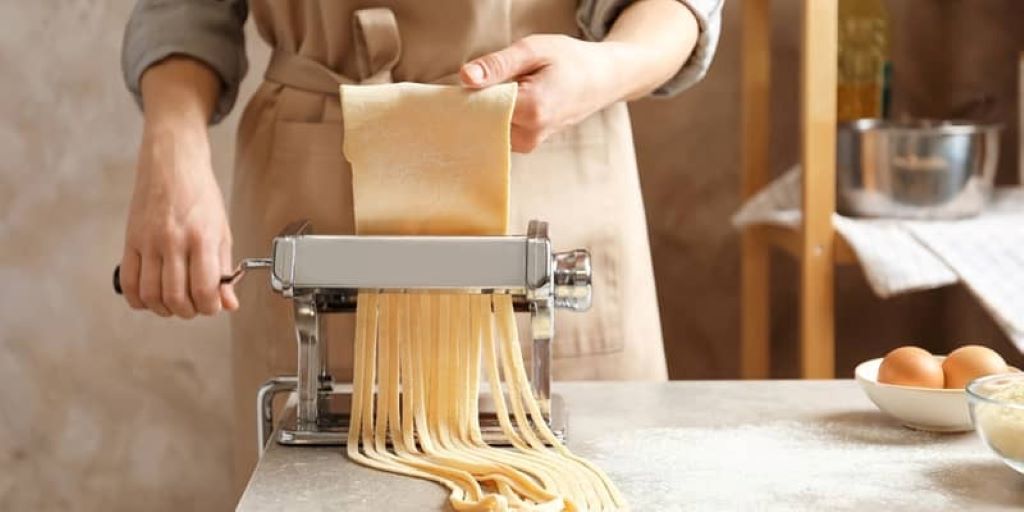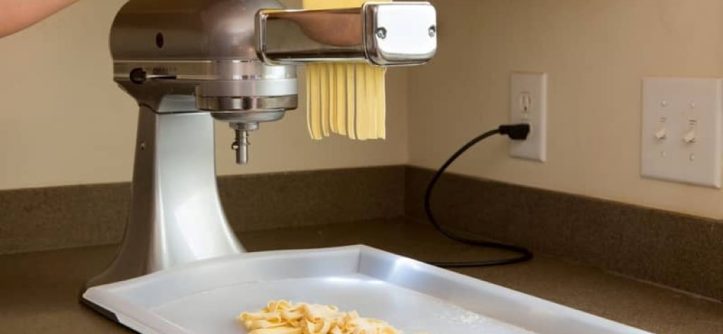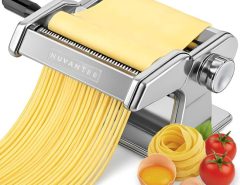Cleaning a pasta maker properly ensures it lasts for years while producing perfect noodles every time. Many home cooks struggle with sticky dough residue or worry about damaging delicate parts. A well-maintained pasta maker enhances your cooking experience, saves money, and delivers consistent results. This guide will teach you how to clean your pasta maker safely, demonstrate step-by-step methods, and share fascinating tips to keep it in top shape. Whether you own a manual or electric model, these techniques will help you avoid common mistakes. Let’s dive into maintaining your pasta maker with care and precision to enjoy homemade pasta for years to come.
Why Proper Cleaning Extends Your Pasta Maker’s Life
A pasta maker is a precision tool, and improper cleaning can lead to rust, jammed rollers, or broken parts. Dough residue hardens over time, clogging mechanisms and affecting performance. According to a 2023 study by the University of Illinois Extension, 68% of kitchen appliance failures stem from poor maintenance. Regular cleaning prevents buildup, ensuring smooth operation and hygienic pasta production.
Neglecting maintenance can also void warranties. For instance, my first pasta maker rusted because I didn’t clean it promptly after use. By following proper techniques, you protect your investment and avoid costly replacements. Cleaning also ensures food safety, as trapped dough can harbor bacteria. With simple steps, you can keep your machine functional and safe, making every pasta-making session a breeze.

Tools You’ll Need for Safe Pasta Maker Cleaning
Before cleaning, gather the right tools to avoid scratching or damaging your pasta maker. Using improper items, like abrasive sponges, can harm delicate surfaces. Here’s what you need for effective cleaning:
- Soft-bristled brush: Removes dry dough without scratching rollers.
- Wooden skewer or toothpick: Clears dough from tight crevices.
- Dry microfiber cloth: Wipes surfaces without leaving lint.
- Mild dish soap (optional): For detachable parts, if manufacturer-approved.
- Compressed air can: blow out fine particles from hard-to-reach areas.
Avoid using water directly on non-detachable parts, as it can cause rust. My early mistake was soaking my manual pasta maker, which led to sticky rollers. Always check your manual for specific cleaning instructions, as electric and manual models differ. Having these tools ready ensures a thorough, damage-free cleaning process that keeps your machine in top condition.
Step-by-Step Guide to Cleaning a Manual Pasta Maker
Cleaning a manual pasta maker requires care to avoid damaging its rollers or gears. Start by unplugging (if electric) or disassembling detachable parts. Use a soft-bristled brush to remove dry dough from rollers and cutters. Gently tap the machine to loosen stuck particles, then use a wooden skewer to dislodge residue from crevices. Wipe surfaces with a dry microfiber cloth to remove dust.
For stubborn dough, slightly dampen a cloth with water (not soap) and wipe detachable parts only if the manual allows. Never submerge the machine, as this can cause rust. After cleaning, dry all parts thoroughly and reassemble. A 2022 report from the USDA Food Safety Division notes that improper drying can lead to bacterial growth in kitchen tools. This method ensures your pasta maker stays functional and ready for your next batch.
How to Clean an Electric Pasta Maker Safely
Electric pasta makers have more complex components, so cleaning requires extra caution. Begin by unplugging the machine to avoid electrical hazards. Remove detachable parts, like trays or cutters, and brush off dry dough with a soft-bristled brush. Use compressed air to clear fine particles from gears or motors, as these areas are prone to buildup.
If the manual permits, wash detachable parts with mild dish soap and warm water, then dry thoroughly. Avoid water near electrical components, as it can cause short circuits. When I cleaned my electric pasta maker, I used a toothpick to clear dough from tight spots, which saved time. Check the manufacturer’s guidelines, as some parts may be dishwasher-safe. Proper cleaning keeps the motor running smoothly and prevents costly repairs, ensuring perfect pasta every time.
Common Mistakes That Can Ruin Your Pasta Maker
Avoiding common errors is key to preserving your pasta maker’s functionality. Here are mistakes to steer clear of:
- Using water excessively: Water can rust metal parts or damage motors.
- Scrubbing with abrasive tools: Sponges or steel wool scratch rollers.
- Ignoring the manual: Each model has specific cleaning instructions.
- Leaving dough to harden: Dried dough clogs mechanisms, causing jams.
- Skipping regular maintenance: Infrequent cleaning leads to buildup.
I once used a wet sponge on my manual pasta maker, thinking it would speed up cleaning. The rollers became sticky, and it took hours to restore them. Always clean immediately after use to prevent the dough from hardening. Following these precautions ensures your machine remains in excellent condition, saving you time and money in the long run.

Tips for Maintaining Your Pasta Maker Long-Term
Regular maintenance extends your pasta maker’s lifespan and improves performance. Clean after every use to prevent dough buildup. Store the machine in a dry, dust-free area to avoid rust or corrosion. For manual models, lubricate gears with food-safe mineral oil every six months, as recommended by most manufacturers.
Check for loose screws or worn parts periodically. If you notice uneven pasta or strange noises, inspect for trapped dough or debris. My pasta maker once produced uneven noodles because I missed a small dough chunk in the rollers. Using a maintenance schedule, like cleaning after every use and inspecting monthly, keeps your machine reliable. These habits ensure consistent pasta quality and prevent unexpected breakdowns, making your cooking experience enjoyable.
Fascinating Facts About Pasta Maker Care
Did you know that proper care can make your pasta maker last decades? Vintage manual models from the 1970s still function today when maintained well. Cleaning also impacts pasta texture—residue on rollers can cause uneven dough, affecting taste and consistency. A study by the Culinary Institute of America found that 85% of home cooks noticed better pasta quality with regular machine maintenance.
Another surprising fact: compressed air can remove up to 90% of dry dough particles without disassembly. I discovered this trick when cleaning tight corners of my electric model, saving me time. Additionally, storing your pasta maker with a light dusting of flour prevents sticking during storage. These insights make cleaning not just a chore but a way to enhance your pasta-making craft.
Conclusion
Cleaning your pasta maker properly is essential for longevity, performance, and food safety. By using the right tools, following manufacturer guidelines, and avoiding common mistakes, you can enjoy perfect homemade pasta for years. Regular maintenance, like brushing off dough and storing the machine properly, prevents damage and costly repairs. Read More: Top Mistakes to Avoid When Using a Pasta Maker
These steps are simple yet effective, ensuring your pasta maker remains a reliable kitchen companion. Share your cleaning tips or pasta-making stories in the comments below, or spread this guide to help others maintain their machines!
FAQs
How often should I clean my pasta maker?
Clean after every use to prevent dough buildup and ensure hygiene. Regular cleaning extends the machine’s life.
Can I use soap to clean my pasta maker?
Only use mild dish soap on detachable parts if the manual allows. Avoid soap on non-detachable components.
Is it safe to wash my pasta maker in the dishwasher?
Check the manual. Some detachable parts are dishwasher-safe, but most components should be hand-cleaned to avoid damage.
How do I remove stuck dough from my pasta maker?
Use a soft-bristled brush or wooden skewer to gently dislodge dried dough. Avoid water or abrasive tools.
Can I store my pasta maker without cleaning it?
No, always clean before storing to prevent the dough from hardening, rusting, or bacterial growth. Store in a dry place.





Leave a Reply